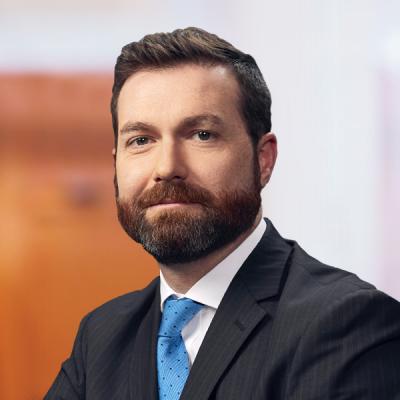What's New in 5G - December 2020
The next-generation of wireless technologies – known as 5G – is here. Not only is it expected to offer network speeds that are up to 100 times faster than 4G LTE and reduce latency to nearly zero, it will allow networks to handle 100 times the number of connected devices, revolutionizing business and consumer connectivity and enabling the “Internet of Things.” Leading policymakers – federal regulators and legislators – are making it a top priority to ensure that the wireless industry has the tools it needs to maintain U.S. leadership in commercial 5G deployments. This blog provides monthly updates on FCC actions and Congressional efforts to win the race to 5G.
Regulatory Actions and Initiatives
Low-Band Spectrum
- The FCC finds that two entities that requested bidding credits to participate in the 2015 auction of AWS-3 spectrum are not eligible for those bidding credits because they remain under the control of DISH.
- On November 23, 2020, the FCC released a Memorandum Opinion and Order on Remand concluding that Northstar Wireless, LLC (“Northstar”) and SNR Wireless LicenseCo (“SNR”) are not eligible for the bidding credits they sought in the AWS-3 auction (Auction 97), despite submitting revised agreements with DISH, because they remain under DISH’s de facto control. The FCC found that the question of whether DISH continues to have de facto control is based on the totality of the circumstances, not the several individual changes the parties may have made to individual provisions of the agreements. The licenses for which they won using bidding credits will eventually be re-auctioned, and Northstar and SNR may be responsible for final default payments at that time.
- On November 23, 2020, the FCC released a Memorandum Opinion and Order on Remand concluding that Northstar Wireless, LLC (“Northstar”) and SNR Wireless LicenseCo (“SNR”) are not eligible for the bidding credits they sought in the AWS-3 auction (Auction 97), despite submitting revised agreements with DISH, because they remain under DISH’s de facto control. The FCC found that the question of whether DISH continues to have de facto control is based on the totality of the circumstances, not the several individual changes the parties may have made to individual provisions of the agreements. The licenses for which they won using bidding credits will eventually be re-auctioned, and Northstar and SNR may be responsible for final default payments at that time.
- NTIA expresses concern with the FCC’s proposals on how proceeds related to the reallocation of public safety spectrum for commercial services will be used.
- On November 20, 2020, NTIA submitted a letter to the FCC regarding its proposals to reallocate spectrum in the 470-512 MHz band, known as the “T-Band,” for commercial services. NTIA explains that while the FCC is required to reallocate and auction the spectrum, NTIA is required to use the auction proceeds to develop a grant program that would cover the relocation costs of public safety entities. NTIA asserts that the FCC’s proposals suggest that the FCC believes it has authority to determine some elements of the program, but if auction proceeds become available to NTIA, it intends to develop a federal financial assistance program and will work closely with the FCC on the transition.
Mid-Band Spectrum
- Additional applications for spectrum in the 2.5 GHz band have been accepted for filing and a request for waiver is denied.
- On November 10, 2020, the FCC released a Public Notice announcing that an additional 57 applications filed in the Tribal Priority Window for licenses in the 2.5 GHz band have been accepted for filing. Objections to these applications are due December 10, 2020. The FCC’s News Release announcing the action notes that “[t]he Tribal applicants that filed these 57 applications are now one step closer to obtaining access to this prime mid-band spectrum to help address the connectivity needs of their rural communities.”
- Relatedly, on November 12, 2020, the FCC released an Order denying a request for waiver by the Kaumana Hawaiian Homes Community Association, which asked the FCC to process its application for 2.5 GHz spectrum in the Tribal Priority Window because it is an eligible entity. The Bureau found that Kaumana did not satisfy the waiver standard and did not demonstrate why it could not access the spectrum through the Department of Hawaiian Homelands, which the FCC found to be eligible to participate.
- On November 20, 2020, the FCC released another Order denying various requests for waiver of seven entities – the Ho-Chunk Nation, Lummi Indian Business Council, Muscogee (Creek) Nation, Salt River Pima-Maricopa Indian Community, San Felipe Pueblo, Shoshone-Bannock Tribes, and Table Mountain Rancheria – to participate in the 2.5 GHz Rural Tribal Priority Window.
- The FCC announces the parties qualified to bid in its upcoming auction of spectrum in the C-band and takes other actions to keep the relocation of incumbents on course.
- On November 12, 2020, the FCC released a Public Notice announcing the parties qualified and not qualified to participate in the auction for C-band spectrum. Of the 74 parties that applied, 57 were qualified to bid and 17 were not. Qualified bidders include AT&T, Cox, Verizon, and T-Mobile. Bidding is scheduled to commence on December 8, 2020.
- To facilitate the clearing of the C-band, the FCC released a Public Notice on November 18, 2020, modifying the applicability of its ex parte rules to communications between or among Commission staff, the Relocation Coordinator (RSM), and the Relocation Payment Clearinghouse (CohnReznick). Those communications would otherwise be subject to public disclosure, but the Public Notice classifies them as exempt. Nevertheless, the Public Notice notes that only information that is placed in the record can be relied upon by the FCC for any decisions in this proceeding. On November 23, 2020, Vertix Consulting filed an Application for Review and Request for Waiver seeking to reverse the selection of CohnReznick as the Relocation Payment Clearinghouse and direct the eligible space station operators to identify an alternative entity. Oppositions to Vertix’s Application for Review are due December 8, 2020.
- Similarly, on November 19, 2020, the FCC released an Order denying the Application for Review filed by ACA Connects (“ACA”) that requested review of the Wireless Telecommunications Bureau’s (“Wireless Bureau”) Final Cost Catalog Public Notice, which included, among other things, the lump sum amounts available to earth station incumbents for relocating from the band. The FCC affirmed the Wireless Bureau’s decision to (i) exclude the costs of installing integrated receiver/decoder or transcoder equipment related to technology upgrades in those lump sum payments; (ii) rely on a third-party consultant – RKF Engineering Solutions, LLC – to determine the appropriate costs; (iii) utilize its disclosed methodology for determining lump sum amounts; (iv) determine reimbursement on a per-antenna basis; and (v) base its lump-sum determinations on satellite operators’ preliminary (rather than final) Transition Plans.
- On November, 30, 2020, the International Bureau released a Public Notice with an updated table of lump sum elections made by incumbent earth stations. As of the release of the Public Notice, the Bureau has accepted 1,476 out of a total of 1,510 lump sum elections (or 97.7% of elections) and denied 34 lump sum elections (or 2.3% of elections). The International Bureau also released a Public Notice announcing an updated list of incumbent C-band earth stations. Finally, the Bureau released an Order granting Comcast’s and TEGNA’s waiver requests to permit them to add existing co-located antennas to their incumbent earth station registrations and providing instructions on how Comcast and TEGNA, as well as the other 60 incumbent earth station operators that received waivers, must formalize the approval of their waiver grants.
- Amateur radio interests seek reconsideration of the FCC’s decision on mid-band spectrum in the 3.45-3.55 GHz band slated for reallocation for commercial 5G services.
- AARL, the national association for Amateur Radio, filed a Petition for Reconsideration of the FCC’s decision to reallocate the 3.45-3.55 GHz band, currently used by amateur radio operators and others, for commercial services. AARL argues that the FCC should not have triggered removal of the secondary status for amateurs based on when the first licenses for commercial operations are issued but when the spectrum is actually being used by new licensees. The petition was placed on Public Notice on November 16, 2020. Oppositions are due 15 days after the Public Notice is published in the Federal Register, which has not yet occurred, and replies are due 10 days after that.
5G Funding
- The FCC acts to promote the deployment of 5G in difficult-to-serve areas.
- The FCC released a Public Notice on November 16, 2020, adopting an “adjustment factor” that will help direct more 5G Fund support (see below) to harder-to-serve areas. The adjustment factor will assign weights to areas eligible to receive 5G Fund support that take into consideration the relative cost of serving areas with difficult terrain and the potential business case for each area. Areas with more difficult terrain and that are less profitable to serve will receive greater weight and therefore greater support. On December 1, 2020, 27 national organizations submitted a Petition for Partial Reconsideration of the FCC’s 5G Fund Order, asking, among other things, that the FCC explain how the “adjustment factor” will provide adequate prioritization to historically underserved or unserved areas.
- The FCC also released minor corrections to its rules regarding the 5G Fund, which will offer up to $9 billion in federal subsidies to bring voice and 5G broadband services to unserved rural areas. The basic requirements remain the same.
- The FCC adopts an item to modernize the 5.9 GHz band for unlicensed services like Wi-Fi, as well as for automotive applications.
- The FCC adopted an Order and Further Notice on November 20, 2020 to repurpose the lower 45 megahertz of the 5.9 GHz band (5.850-5.895 GHz) for unlicensed use and require the Intelligent Transportation System radio service to use cellular vehicle-to-everything-based technology in the upper 30 megahertz of the band (5.895-5.925 GHz). Comments and replies on the Further Notice are due 30 and 60 days, respectively, after Federal Register publication.
5G Networks and Infrastructure
- GAO releases a report assessing the technologies associated with 5G wireless networks.
- On November 24, 2020, at the request of several members of Congress, the Government Accountability Office (“GAO”) released a report that discusses 5G use cases and challenges to the performance and use of 5G in the U.S. The report is based on GAO staff’s interviews with and technical comments from government officials, industry representatives, and researchers.
- On November 24, 2020, at the request of several members of Congress, the Government Accountability Office (“GAO”) released a report that discusses 5G use cases and challenges to the performance and use of 5G in the U.S. The report is based on GAO staff’s interviews with and technical comments from government officials, industry representatives, and researchers.
- The FCC plans to take additional steps to secure the Nation’s communications networks
- On November 19, 2020, the FCC released a draft Order that would, if adopted at the agency’s upcoming December open meeting, require certain carriers to remove and replace from their networks equipment and services that pose a risk to national security. The FCC would also (i) establish a program that will provide at least $1.6 billion in federal funds to smaller carriers for that removal and replacement; (ii) adopt procedures and criteria for publishing and maintaining a list of covered communications equipment and services; and (iii) require all providers of advanced communications services to report on whether their networks use covered communications equipment or services.
- On November 19, 2020, the FCC released a draft Order that would, if adopted at the agency’s upcoming December open meeting, require certain carriers to remove and replace from their networks equipment and services that pose a risk to national security. The FCC would also (i) establish a program that will provide at least $1.6 billion in federal funds to smaller carriers for that removal and replacement; (ii) adopt procedures and criteria for publishing and maintaining a list of covered communications equipment and services; and (iii) require all providers of advanced communications services to report on whether their networks use covered communications equipment or services.
- The FCC intends to seek public input on changes to its equipment authorization rules to facilitate the faster deployment of products and services for the 5G economy.
- The FCC issued a draft Notice of Proposed Rulemaking on November 19, 2020, that would, if adopted at its December open meeting, propose and seek comment on permitting conditional sales of radiofrequency devices to consumers prior to equipment authorization and permitting the importation of a limited number of devices for certain pre-sale activities prior to the devices obtaining certification. The draft item notes that the proposed changes “would leverage today’s fast-paced Internet-driven world to super-charge how the newest technologies and must-have devices reach consumers.” Comments and reply comments would be due 30 and 45 days, respectively, after Federal Register publication.
Legislative Efforts
- The House passed a bill that would require NTIA to update its information technologies, tools, and databases.
- On November 18, 2020, the House passed the Spectrum IT Modernization Act. If enacted, the bill would direct NTIA to submit a plan on how it will improve the coordination of federal spectrum by modernizing the infrastructure that federal agencies use to manage spectrum. The bill is now in the Senate.
- On November 18, 2020, the House passed the Spectrum IT Modernization Act. If enacted, the bill would direct NTIA to submit a plan on how it will improve the coordination of federal spectrum by modernizing the infrastructure that federal agencies use to manage spectrum. The bill is now in the Senate.
- The Senate Commerce Committee passed a bill that would require the FCC to auction the 3.45-3.55 GHz band by the end of next year.
- On November 18, 2020, the Senate Commerce Committee passed the Beat CHINA for 5G Act of 2020, which would require NTIA to remove or modify its operations in the 3.45-3.55 GHz band so that spectrum in the band can be made available for commercial use. The bill would also require the FCC to commence an auction for spectrum in the band by December 2021, which the FCC is currently contemplating. Auction proceeds would cover 110% of federal relocation or sharing costs. The requirements overlap actions the FCC is already taking in a proceeding governing the band.
- On November 18, 2020, the Senate Commerce Committee passed the Beat CHINA for 5G Act of 2020, which would require NTIA to remove or modify its operations in the 3.45-3.55 GHz band so that spectrum in the band can be made available for commercial use. The bill would also require the FCC to commence an auction for spectrum in the band by December 2021, which the FCC is currently contemplating. Auction proceeds would cover 110% of federal relocation or sharing costs. The requirements overlap actions the FCC is already taking in a proceeding governing the band.
- The Senate Commerce Committee approves President Trump’s nominee for FCC Commissioner.
- On December 2, 2020, the Senate Commerce Committee approved President Trump’s nomination of Nathan Simington as a new FCC Commissioner. Mr. Simington previously served as a senior advisor at NTIA. The nomination must now be approved by the full Senate.

What's New in 5G - November 2020
November 2, 2020| Blog

What's New in 5G - September 2020
September 3, 2020| Blog






